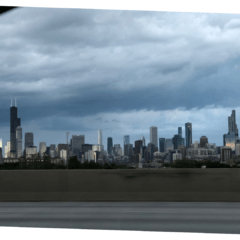[Jennifer takes a virtual hike into New Jersey’s Pine Barrens via a recent three-artist exhibit spanning photography, drawings, and film. — the Artblog editors]
David Scott Kessler, Kaitlin Mosley, and Sarah Puleo are artists who explore the landscape and mysteries of the New Jersey Pine Barrens–an almost mythological place. This is the home of the Jersey Devil and the White Stag; these legends have their own Wikipedia page, perhaps confirming the endurance of these myths.
At Gravy Studio and Gallery, these three artists presented photographs, sketches, and film that touched lightly on this folklore, while relishing the contradictions and natural beauty found in this large, forested area of the New Jersey coastal plain. The Denizens of Pines exhibition at Gravy closed on July 31.
Unexpected solitude
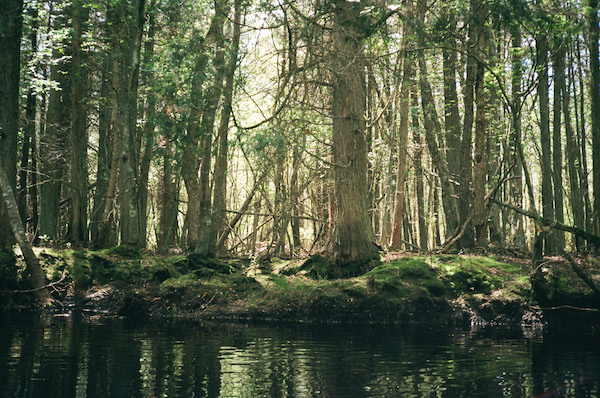
Because all three artists took the same location as inspiration, there was understandable overlap in some of the imagery. Landscape views of dense forest, such as Kaitlin Mosley’s “Oswego,” occasionally repeated in ways that confirm the vastness and impact of the Pines’ topography, and how nature can create its own complex architecture–which, at times, seems to shut out all human intervention.
New Jersey is the most densely populated state in the country, but the images at Gravy suggested that the Pine Barrens is still a place where one can feel totally alone.

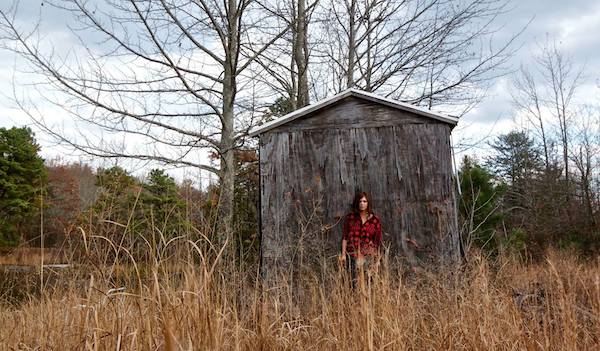
By contrast, other images showed vast, open places where the pine forests transition into marshland and dunes. In Puleo’s “Divided,” we see scrubby edges of brush along watery estuaries, stretching into the far distance and culminating at the Atlantic City towers, which loom on the horizon like a zig-zaggy, dark cloud. In some images, the Pines look so vast, but Puleo’s photograph confirms that nature is not unbounded.

Other photographs investigated Puleo’s experience of returning to live in the Pine Barrens after living for six years in cities. “Instincts” is a photograph of the artist’s dog holding in his mouth a deer leg found in the woods–a common occurrence in the Pines, as hunters often dress their deer on-site and leave the unwanted parts.
“Isolation” is a self-portrait made to satisfy an assignment in a photography workshop. In it, Puleo is alone and leaning on an old shack. Here, she seems equally part of the human-made world of the building, and of the wild grasses that frame the entire foreground of the image. Puleo and the small structure may at once be growing out of and succumbing to nature.
Pines on film
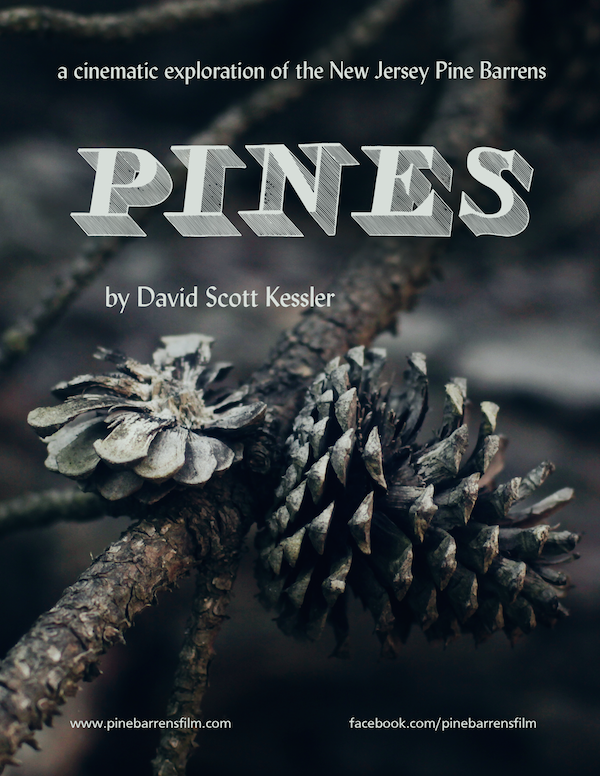
David Scott Kessler’s film, “Pines,” brings to life the beauty, stories, and contradictions found in the Pine Barrens. At Gravy, an edited section of the film, titled “Pines in Progress,” played next to a terrarium Kessler made of living mosses, sand, and cones from the Pinus rigida, or pitch pine tree. Also included was Kessler’s ink drawing of these same pine cones.
These three pieces together evoke and represent the Pine Barrens–a site barely 20 miles away from Gravy Studio. The terrarium and drawing may be reminiscent of something like a Robert Smithson “Non-Site,” or “a three-dimensional logical picture that is abstract, yet it represents an actual site in N.J.,” as Smithson wrote about his own “Nonsite, Pine Barrens, New Jersey” (1968).
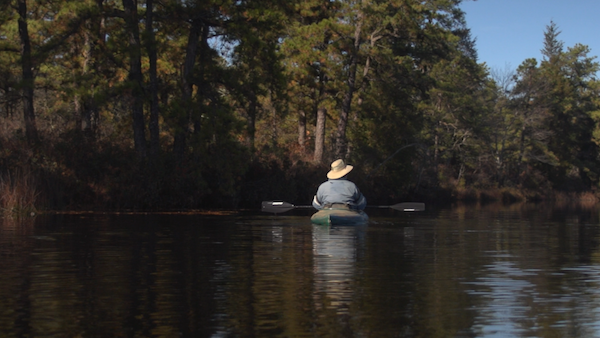
The film itself evokes the style of a TV nature program, only to upend this didactic genre. At times, it seems we are learning hard facts about this place, while other scenes only reinforce the unknowable or contradictory aspects of the site. We learn from Allen Crawford, who acts as nature guide in the film, that the Leni Lenape didn’t settle in the Pines primarily due to lack of food there. The water is acidic, and few, if any, fish are to be found. Some areas, such as the Great Swamp, are so densely forested that passing through them in full summer leaf is impossible.
Education hand-in-hand with wonder
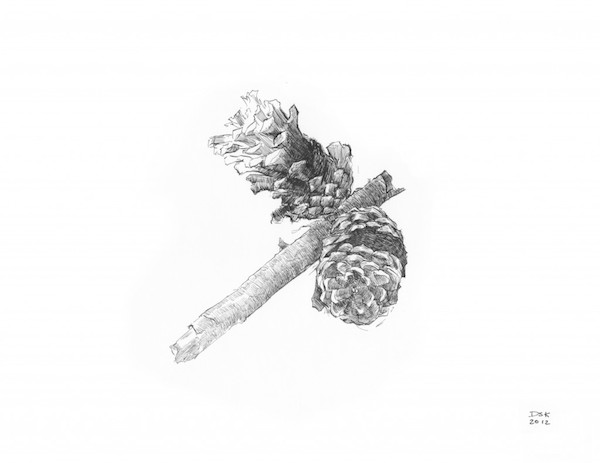
Crawford, a noted graphic designer, author, and naturalist, plays a character here, and Kessler films and directs him in ways that ensure a level of uncertainty about Crawford and the information he shares, even as he expertly uses the proper Latin names for various plants. Kessler noted that this uncertainty is intentional, because it preserves a sense of mystery and awe about this place.
The formal qualities of the film reinforce these ideas, for we see many educational close-ups of frogs and leaves, only to be brought back again to the grand, Romantic, macro views. Kessler pushes the contrasts of micro and macro, light and dark, facts and mysteries to great effect. We learn remarkable information and meet unique characters, but never at the expense of losing a curious wonder.
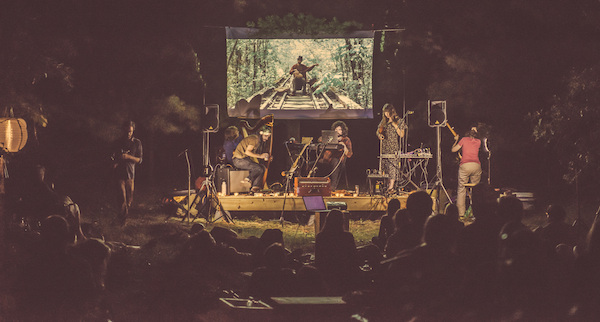
“Pines in Progress” has been screened in galleries and in other, more immersive venues, such as the backyard of the Gravy gallery building and a retreat in the Pine Barrens. Each event included a screening and a live performance by the Ruins of Friendship Orchestra, which scored the film. Kessler described these events as “both integral to the formation of the film as well as being complete works in themselves.” These performances are intended to transport people to what Kessler describes as “this often surreal world of the Pine Barrens.”
To find up-to-date information about the film “Pines,” or the “Pines in Progress” performances and events, be sure to check the Pines Facebook page and Instagram @pinebarrensfilm.




